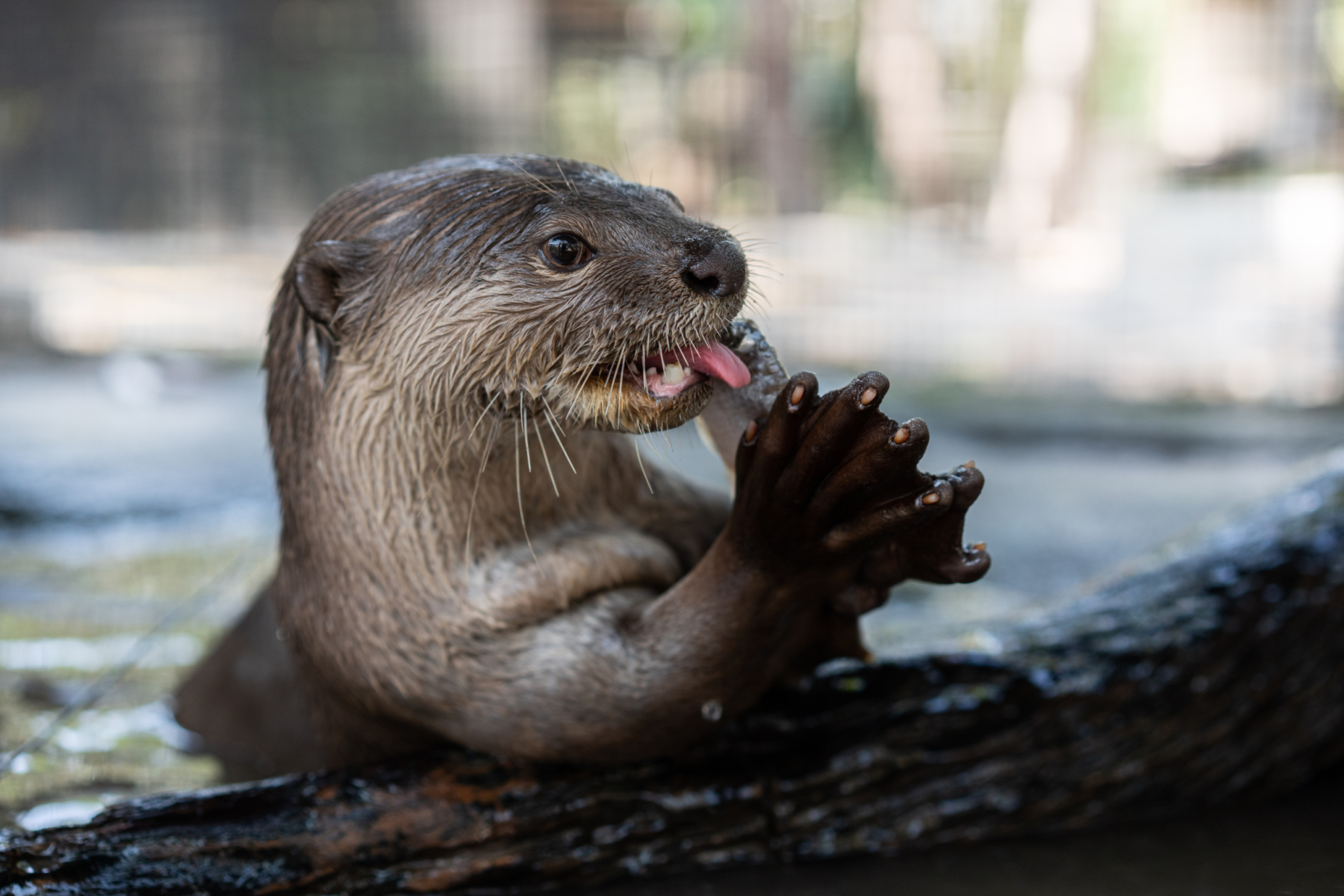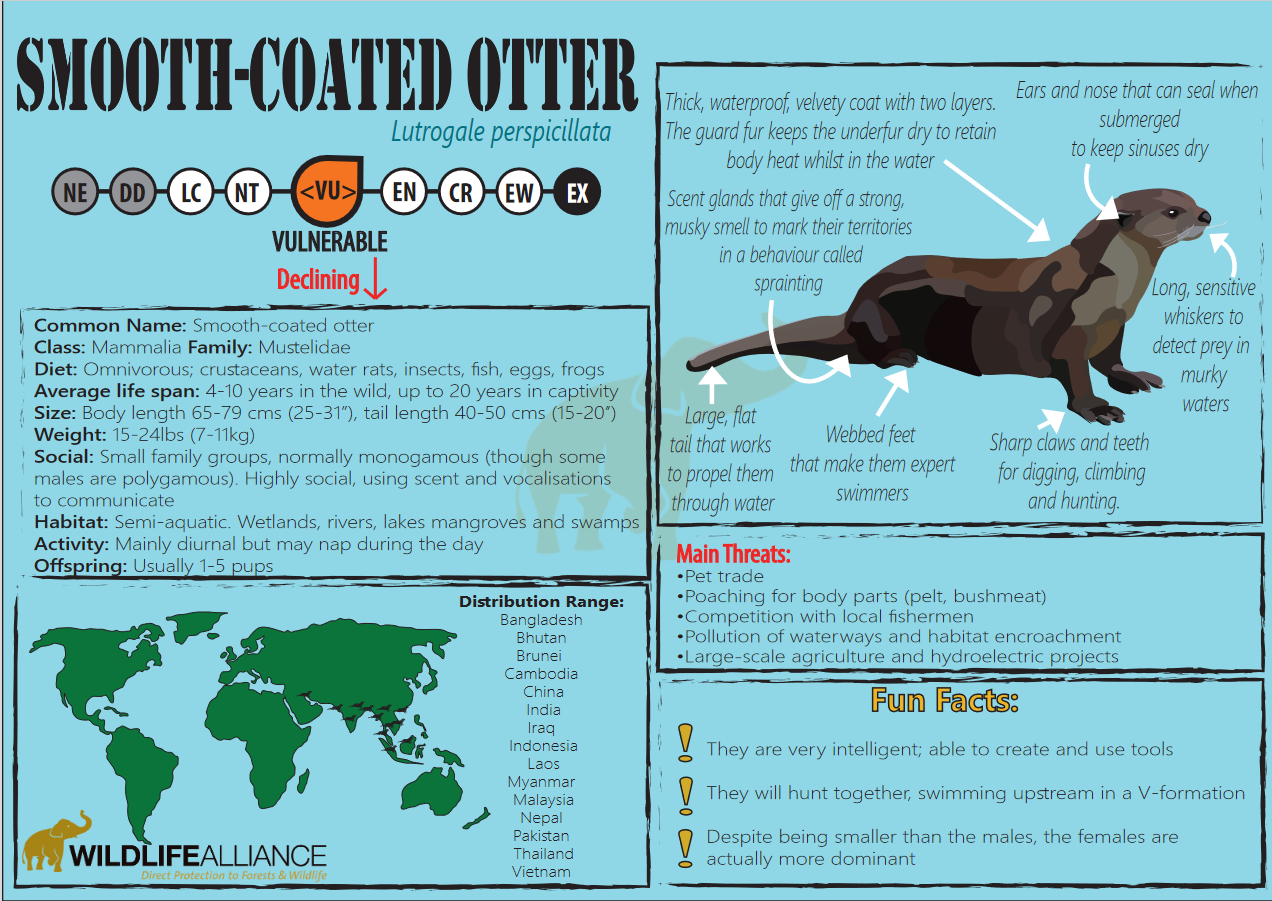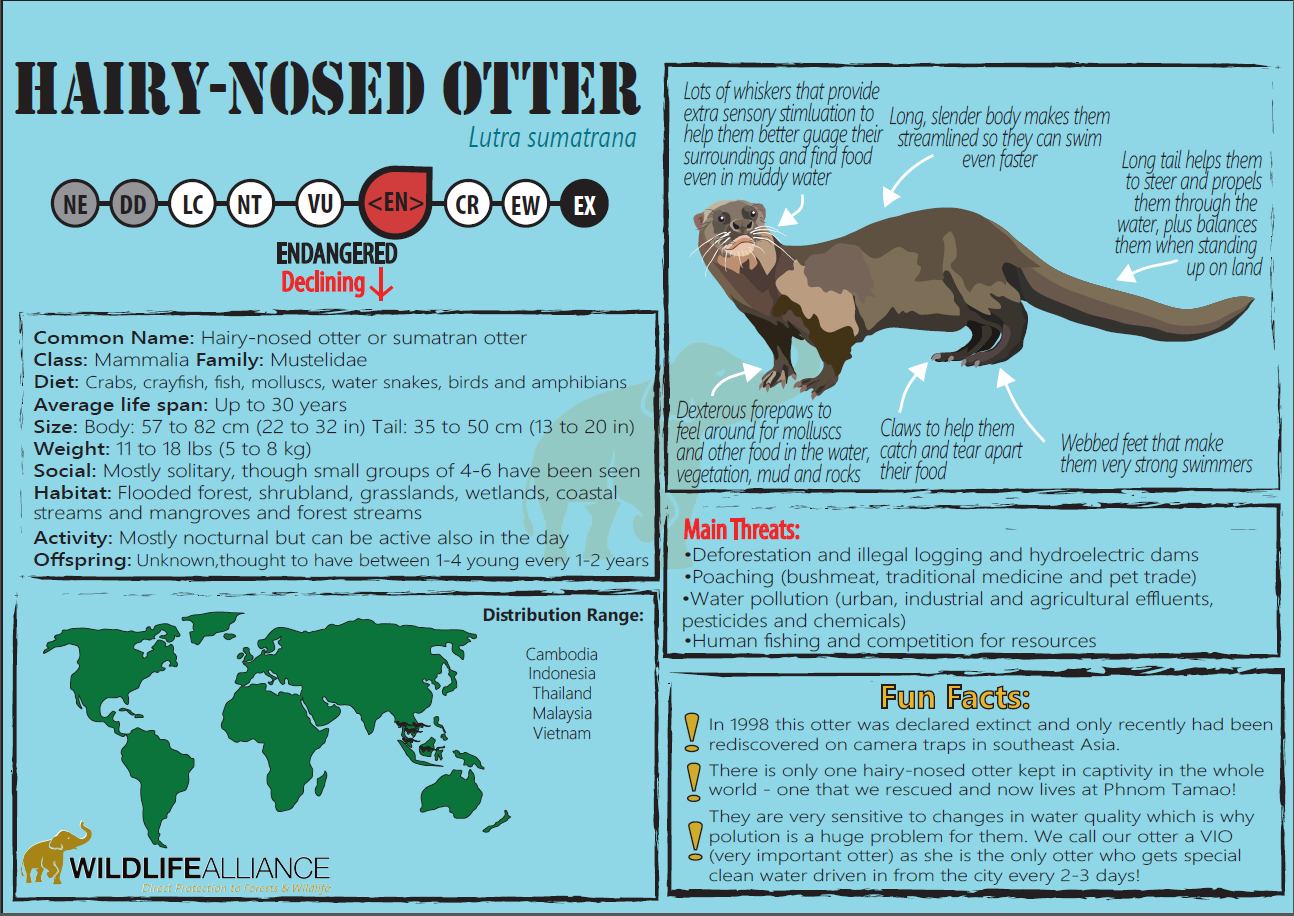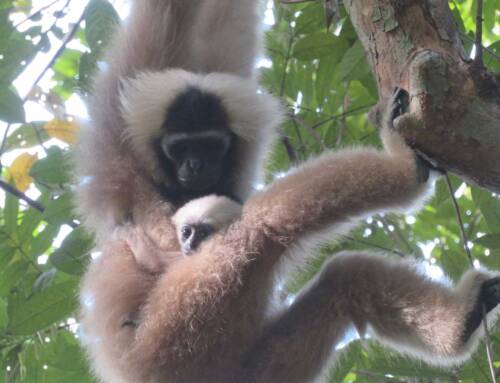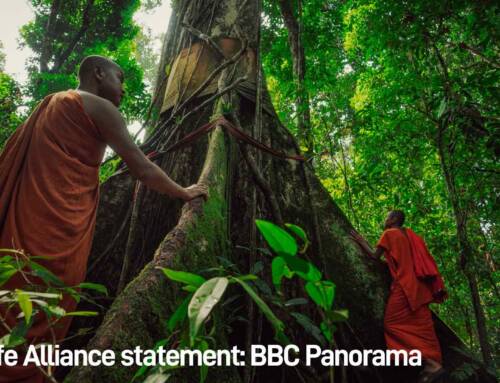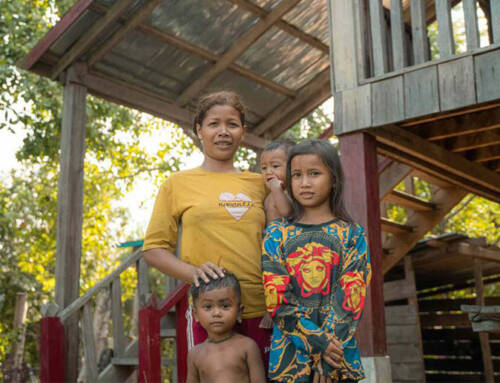26 May 2021 is World Otter Day!
Today we celebrate otters big and small! At Phnom Tamao, everyday is World Otter Day! At Wildlife Alliance we rescue, rehabilitate and release Otters! But first a little background on Otters…
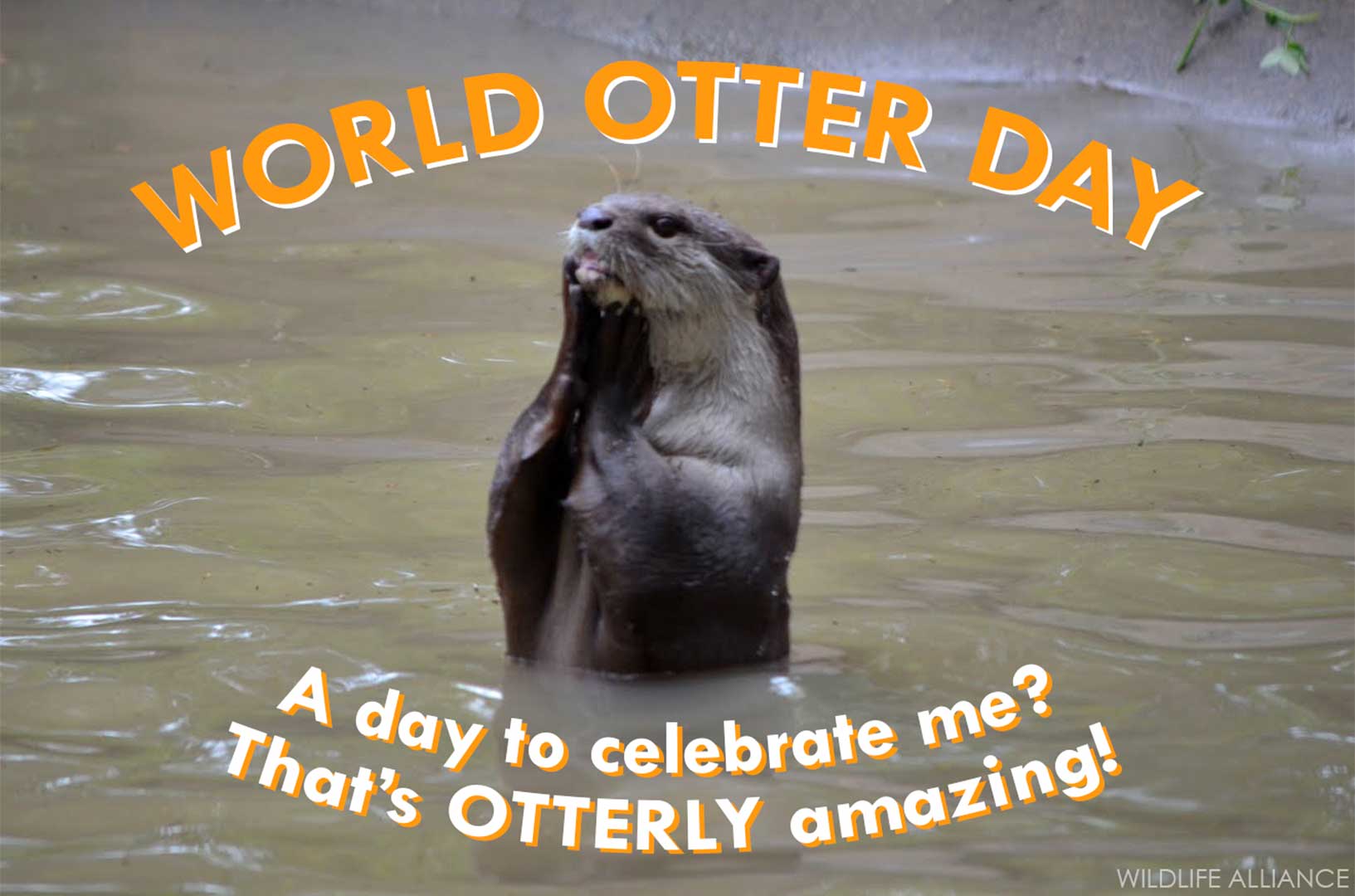
Why protect Otters?
Ever seen an Otter? At a zoo, on TV, or in the wild (you lucky thing!) If you have, you know they’re pretty charismatic! They are social animals and live in large family groups. In Cambodia, groups of up 15 otters have been spotted!
Our friends at the Kla Trey Cambodian Fishing Cat Project (CFCP) encountered a family of 8 Smooth-coated Otters in the wild!
What are otters like?
Otters are inquisitive but cautious. They are fiercely territorial and are not afraid to announce their territory to others! In the wild as in captivity, they will investigate any new object, including intruders that enter their territory.
Do they investigate these new curiosities like you or I would, by picking it up, or giving it a sniff like other species? Otter nonsense! No, otters prefer to get a sense of these things by biting them! And intruders beware, otters can bite! Their jaws can crack open molluscs’, snails, or take a finger off!
This is one amongst many reasons why otters do not make good pets.
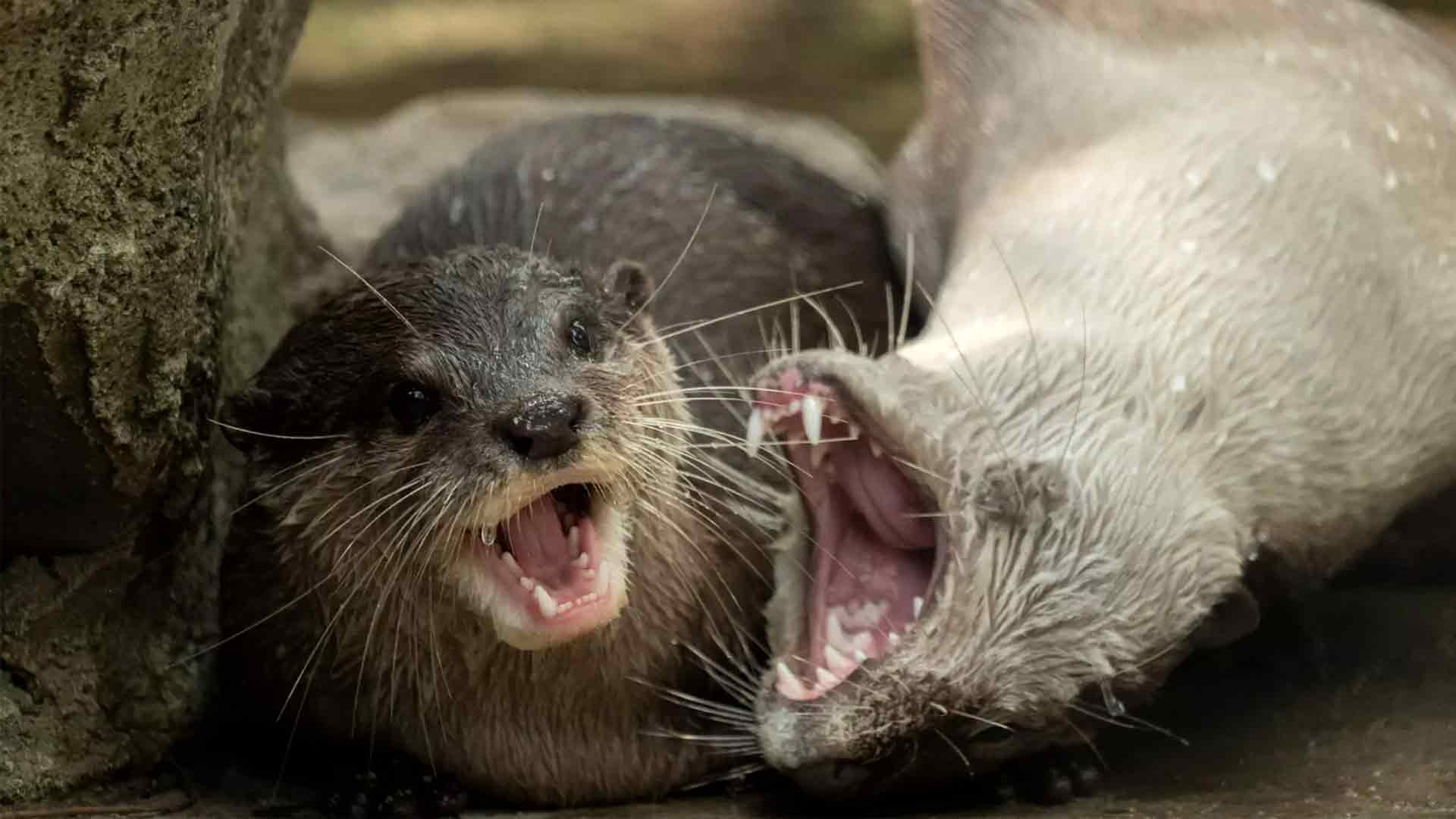
Beware an otter’s bite!
Otters are vocal! They communicate with each other in loud squeaks, including between parents and pups. They may also indulge in karaoke from time to time!
Check out how these smooth-coated otters react to CFCP when the team interrupts their karaoke session! Besides squeaks, their repertoire also includes hissing and roaring to signal their discontent!
What do otters smell like?
The eau de otter is another reason to not have an otter as a pet! Their pungent smell is because of their diet of fresh fish. What’s more, otters like to spread their stink around! Otters have a thing for scent-marking their territories. That means when they defecate- typically en masse in family latrines- they love to spread the mess around with their big flat tails! Sound like something you want to cuddle up to at night? Otterly not! But unfortunately the removal of these animals from the wild to supply the exotic pet trade is just one threats that otters face.
Otters in the bathroom… and the living room!
In fact, these latrines are a give away for otter researchers, including the team at the Cambodian Fishing Cat Project who study otters in the mangroves of Peam Krasop Wildlife Sanctuary.
These sites are used by many other animals in the mangroves, who come to check out the Otters Living Room. The “living room” sites are also used by other animals who like to leave their own marks on the place ! In fact, the appeal of these spaces has led some to describe Otters as the platform owners, or tech moguls of the mangroves!
What otter species are there in Cambodia?
Three otter species call Cambodia home. Once upon a time, the Kingdom of Wonder, with its large expanse of wetlands and coastline, could have been a paradise for otters!
Sadly, here as elsewhere, otters are losing their homes to settlements and agriculture, while their favourite food is scooped up in nets. Sometimes, otters view these fishing nets as a free meal. But when otters raid nets, they can get into trouble with fisherfolk! Another threat otters face is conflict with humans, especially fishing communities.
The three otter species in Cambodia and their IUCN status are:
Smooth-coated otter [Vulnerable]
Hairy-nosed otter [Endangered]
Asian small-clawed otter [Vulnerable]
Of these three, sightings of Smooth-coated Otters and Hairy-nosed Otters are the most common in Cambodia.
However, the more solitary habits of the Hairy-nosed Otter makes them difficult to spot, not to mention, globally they are fewer in number! In fact, Hairy-nosed Otters are the rarest otter species in the world! What’s more, Phnom Tamao Wildlife Rescue Centre is the only place in the world to have the species in captivity!
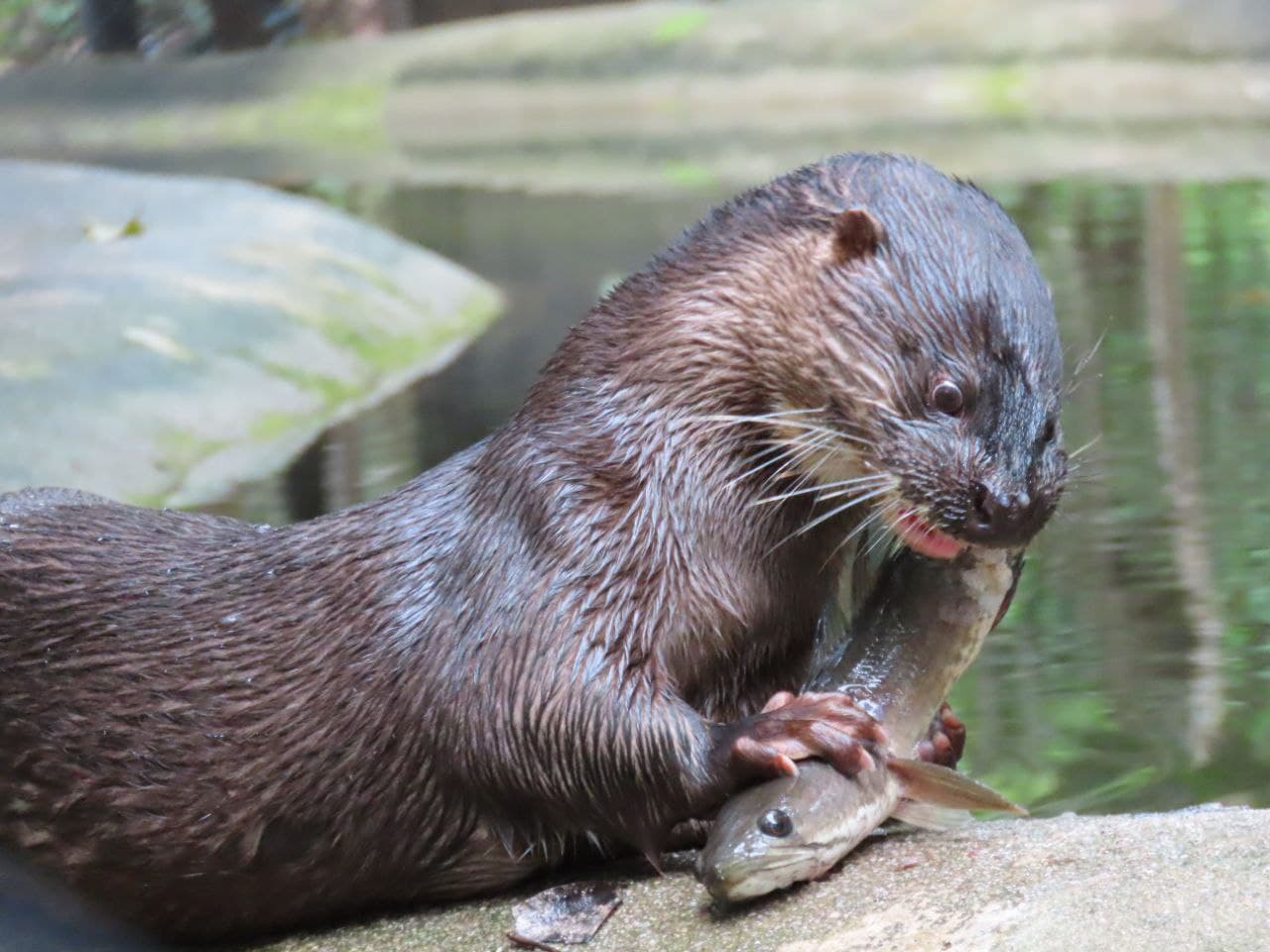
A Hairy-nosed Otter tucks into a fish at Phnom Tamao Wildlife Rescue Centre. Hairy-nosed Otters are the rarest otter species in the world! They have only ever been kept in captivity in one place – Phnom Tamao!
How does Wildlife Alliance protect otters?
We’re doing everything we can to protect otters. As if just being cute wasn’t reason enough in itself to warrant their protection, otters are often considered indicator and keystone species in the environments in which they are found. Think of otter living rooms!
We protect otters in 3 stages:
Rescue – from the illegal wildlife trade by our Wildlife Rapid Rescue Team
Rehabilitate – rescued otters at Phnom Tamao Wildlife Rescue Centre
Release – otters within suitable habitats, such as the Angkor landscape! Read more about our Otterly exciting release of 5 Smooth-coated otters here.
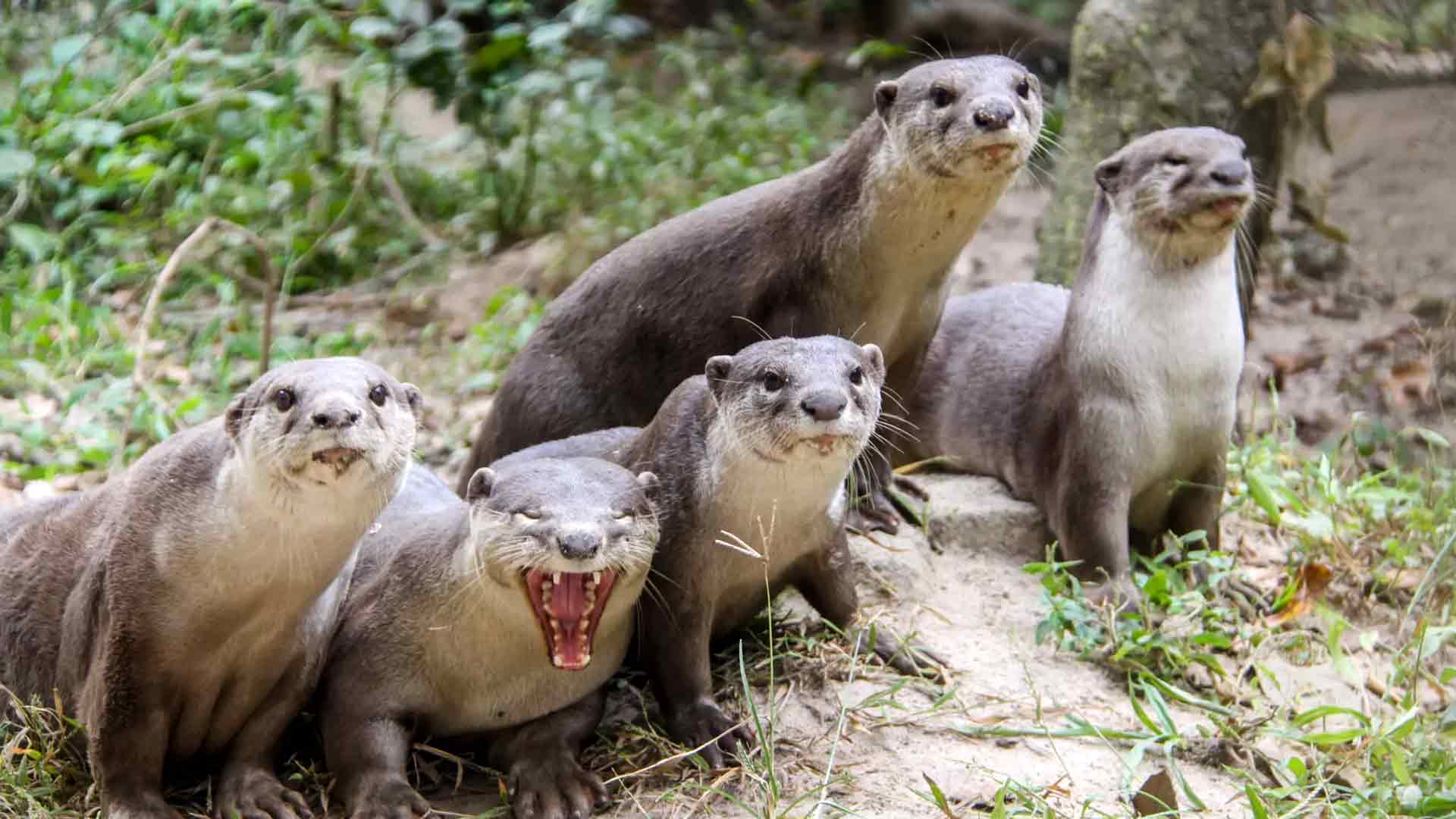
How do otters help the ecosystem?
Otters keep precious ecosystems in balance as predators and detect environmental pollution and toxicity well before it is evident to us humans.
These ecosystem and environmental services may not immediately come to mind when thinking of Cambodia’s primarily freshwater otter species. But if you are lucky enough to see otters in the wild here, it’s a pretty good sign you’re in a healthy waterway! Keep your eyes peeled for Otter Living Rooms and hold your nose if you pass by an Otter Latrine!
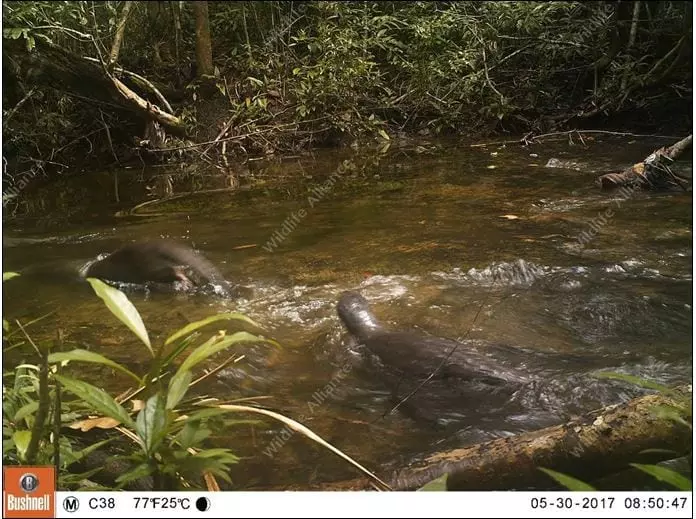
Smooth Coated Otter captured on camera trap in the wild!
Why protect otters’ ecosystems?
When we protect otters, we protect where they live! Their habitat can include extremely fragile and important habitats like mangroves, and the many other species found there. At Wildlife Alliance, our rangers protect 1.3 million hectares of tropical rainforest, including important waterways, within the Cardamom Rainforest Landscape. This includes important otter habitat. While our rangers are seldom lucky enough to see otters in the wild, our camera traps have recorded them in the Cardamoms! Within the Landscape is our partner, the Cardamom Tented Camp where you may be lucky enough to see a family of wild otters like a recent guest!If seeing otters in the wild is a dream of yours, make your next adventure the Cardamom Tented Camp! In addition to having the chance to spot an otter, your stay keeps the forest standing!
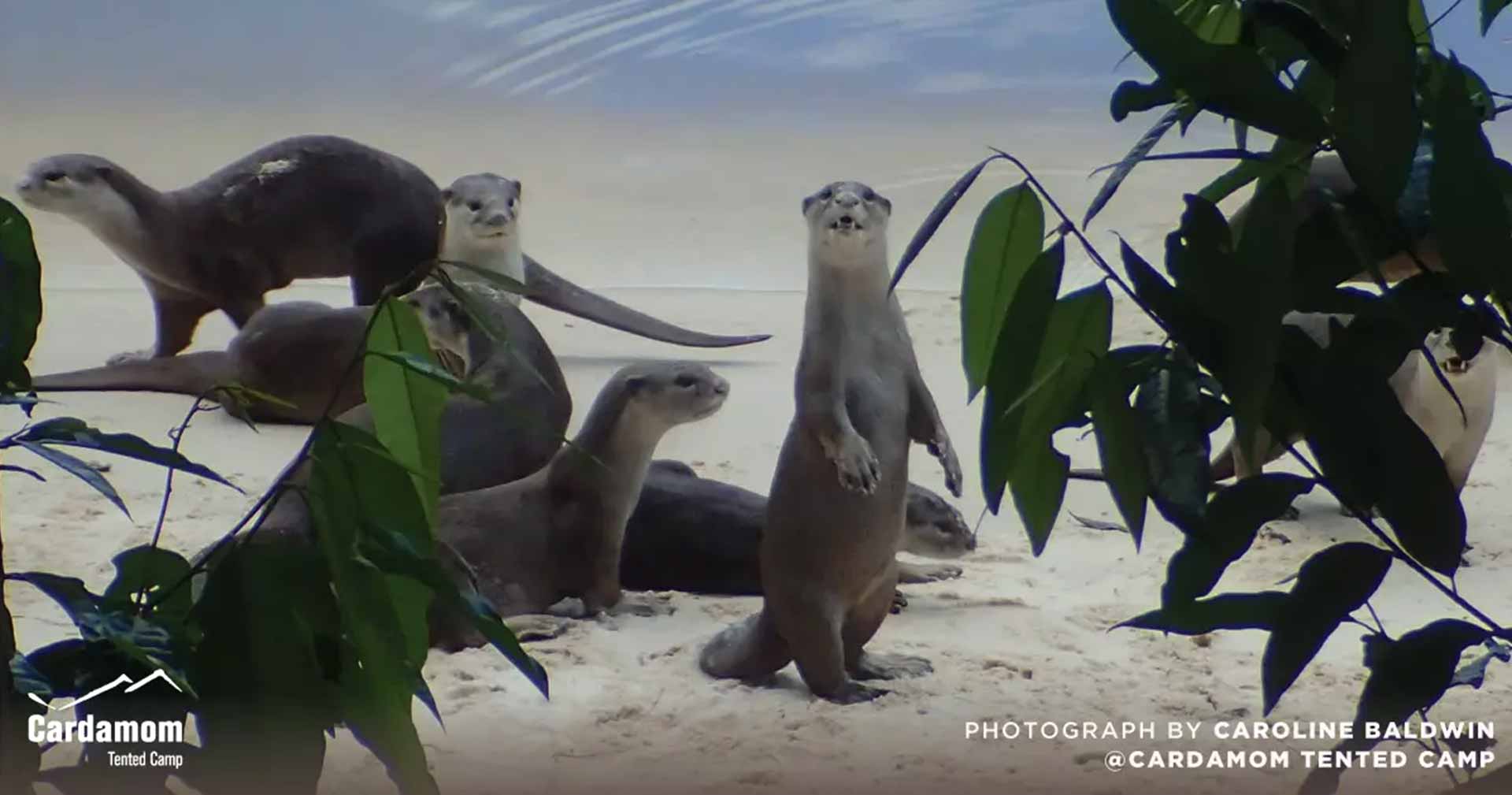
Will you be lucky enough to see otters in the wild like Caroline Baldwin?
3 things you can you do to protect Otters
1. Post about Otters on social media using the hashtag #WorldOtterDay
2. If you see Otters being sold, call your local wildlife rescue service. In Cambodia, that’s the Wildlife Rapid Rescue Team. You can contact them via Facebook (@WCHCambodia) or call 012500094.

